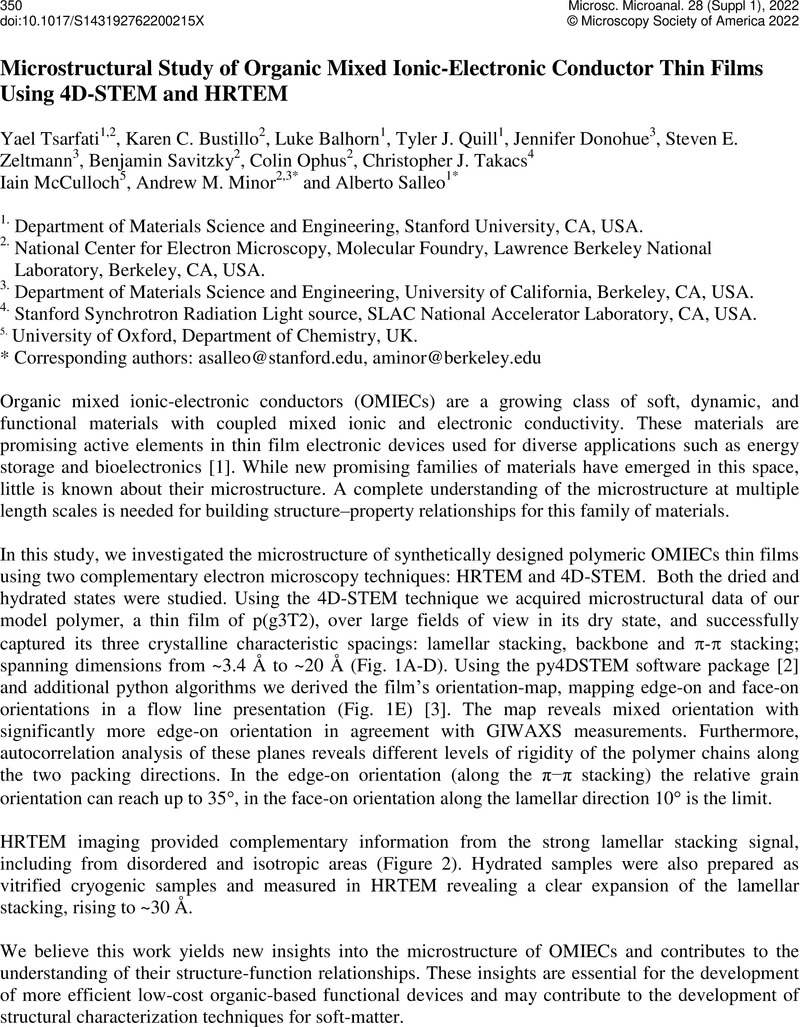This work was supported by the Electron Microscopy of Soft Matter Program (KC11BN) and the Molecular Foundry, which are supported by the Office of Science, Office of Basic Energy Sciences, of the U.S. Department of Energy under Contract No. DE-AC02-05CH1123
Google Scholar